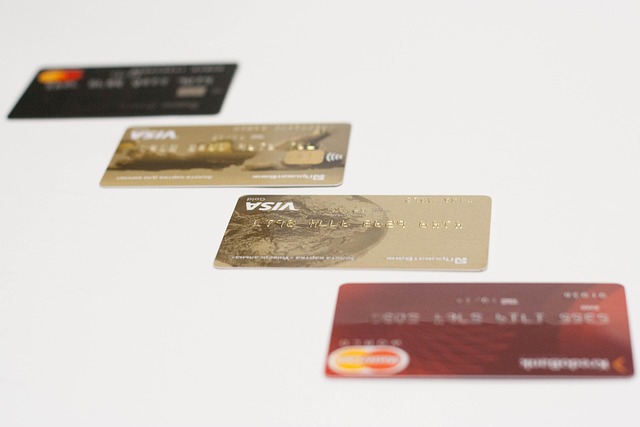Exploring credit card benefits
Credit cards offer more than just a convenient payment method. From cash back rewards and travel perks to purchase protection and building credit history, modern credit cards come with a variety of benefits designed to enhance your financial life. Understanding these features can help you select the right card for your spending habits and maximize the value you receive.

Credit cards have evolved from simple payment tools into sophisticated financial products offering numerous advantages to cardholders. Whether you’re looking to earn rewards on everyday purchases, finance large expenses, or build your credit profile, today’s credit cards offer features tailored to diverse financial needs and lifestyles. This article explores the various benefits credit cards provide and how to leverage them effectively.
Understanding reward programs and point systems
Reward programs are among the most popular credit card benefits. These programs typically award points, miles, or cash back based on your spending. General rewards cards offer flexible points that can be redeemed for various options including statement credits, gift cards, merchandise, or travel bookings. Travel-focused cards earn miles that can be transferred to airline partners or used directly through the card issuer’s travel portal. Co-branded airline or hotel cards often provide specific perks with those partners, such as free checked bags or complimentary room upgrades.
The value of reward points varies significantly between programs. Some cards offer flat-rate rewards on all purchases, while others provide higher earning rates in specific categories like dining, groceries, or gas. Understanding your spending patterns is crucial for maximizing reward potential—a card offering 5% back on dining holds little value if you rarely eat out.
Essential credit card features beyond rewards
While rewards often grab headlines, other credit card features can provide substantial value. Purchase protection covers eligible items against damage or theft for a limited period after purchase. Extended warranty protection adds additional coverage beyond the manufacturer’s warranty. Price protection, though less common now, reimburses the difference if you find an item at a lower price after purchase.
Many cards also offer travel-related protections like trip cancellation/interruption insurance, rental car collision coverage, and lost luggage reimbursement. Premium cards may include airport lounge access, Global Entry/TSA PreCheck application fee credits, and concierge services. For everyday convenience, features like digital wallets, mobile apps with spending analytics, and automated payment reminders help streamline financial management.
Comparing cash back options for everyday value
Cash back credit cards offer straightforward value by returning a percentage of your purchases as cash rewards. These cards typically fall into three categories: flat-rate cards offering the same percentage on all purchases (usually 1.5-2%), category cards with higher rates in specific spending areas, and rotating category cards with quarterly changing bonus categories.
Flat-rate cards like the Citi Double Cash provide simplicity and consistent returns. Category cards such as the Blue Cash Preferred from American Express offer higher rewards in permanent categories like groceries and streaming services. Rotating category cards including the Discover it Cash Back feature quarterly changing 5% categories that require activation. Some cash back programs offer redemption bonuses when points are used in specific ways, while others provide straightforward statement credits or direct deposits.
Interest rates and promotional offers explained
Credit card interest rates, expressed as Annual Percentage Rates (APRs), significantly impact the cost of carrying a balance. These rates typically range from 14% to 26% depending on your credit profile and the specific card. Many cards offer introductory 0% APR periods on purchases, balance transfers, or both, typically lasting 12-21 months.
Balance transfer offers can be particularly valuable for consolidating high-interest debt, though they usually include a fee (typically 3-5% of the transferred amount). Understanding the difference between the grace period (the time between your statement date and payment due date when no interest accrues on new purchases) and promotional periods is essential for managing costs. After promotional periods end, standard interest rates apply to any remaining balance.
Building credit history with responsible card use
Credit cards serve as powerful tools for establishing and improving credit history when used responsibly. Payment history, which accounts for 35% of your FICO score, is reported to credit bureaus each month. Making on-time payments consistently demonstrates financial reliability to potential lenders.
Credit utilization—the percentage of available credit you’re using—impacts 30% of your score. Keeping balances below 30% of your credit limit (and ideally under 10%) signals responsible credit management. The length of credit history (15% of your score) benefits from keeping accounts open long-term, while the mix of credit types (10%) improves by having both revolving accounts like credit cards and installment loans. New credit applications (10%) should be limited as each generates a hard inquiry that temporarily lowers your score.
Credit card fees and costs comparison
Understanding the various fees associated with credit cards helps determine their true cost beyond interest rates. Annual fees range from $0 for basic cards to $500+ for premium offerings with extensive benefits.
| Card Type | Typical Annual Fee | Notable Benefits | Other Common Fees |
|---|---|---|---|
| Basic | $0 | Simple cash back or rewards | Foreign transaction (3%), late payment ($29-40) |
| Mid-tier rewards | $95-$99 | Enhanced rewards, some travel benefits | Foreign transaction (0-3%), balance transfer (3-5%) |
| Premium travel | $250-$695 | Airport lounge access, travel credits, elite status | Late payment ($39-40), cash advance (5% or $10 minimum) |
| Secured/Student | $0-$49 | Credit building tools, educational resources | Cash advance (3-5%), returned payment ($29-40) |
Prices, rates, or cost estimates mentioned in this article are based on the latest available information but may change over time. Independent research is advised before making financial decisions.
Beyond annual fees, other common charges include foreign transaction fees (typically 3% on international purchases), late payment fees (around $29-40), cash advance fees (usually 3-5% with a minimum charge), balance transfer fees (3-5%), and returned payment fees. Some cards waive certain fees as part of their benefits package, particularly premium travel cards that eliminate foreign transaction fees.
Security features protecting your finances
Modern credit cards incorporate multiple security layers to protect cardholders. EMV chip technology creates unique transaction codes for in-person purchases, making cards difficult to counterfeit. Contactless payment capabilities allow secure transactions without physically swiping or inserting your card. Virtual card numbers generate temporary numbers for online shopping, keeping your actual account details private.
Fraud monitoring systems use artificial intelligence to detect unusual spending patterns and potentially block suspicious transactions. Zero liability protection policies ensure you’re not responsible for unauthorized charges when reported promptly. Additional security features include purchase notifications, spending alerts, and the ability to freeze your card instantly through mobile apps if lost or stolen.
Credit cards offer a comprehensive package of benefits extending far beyond simple payment convenience. By understanding the various features available—from rewards programs and promotional offers to security protections and credit-building opportunities—consumers can select cards that complement their financial goals and spending habits. The most valuable credit card is ultimately the one whose benefits align with your specific needs while minimizing unnecessary costs through responsible use.




